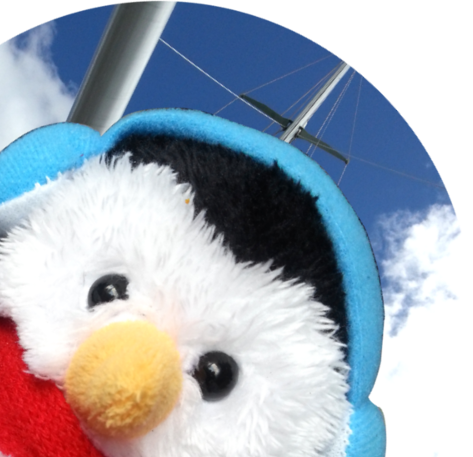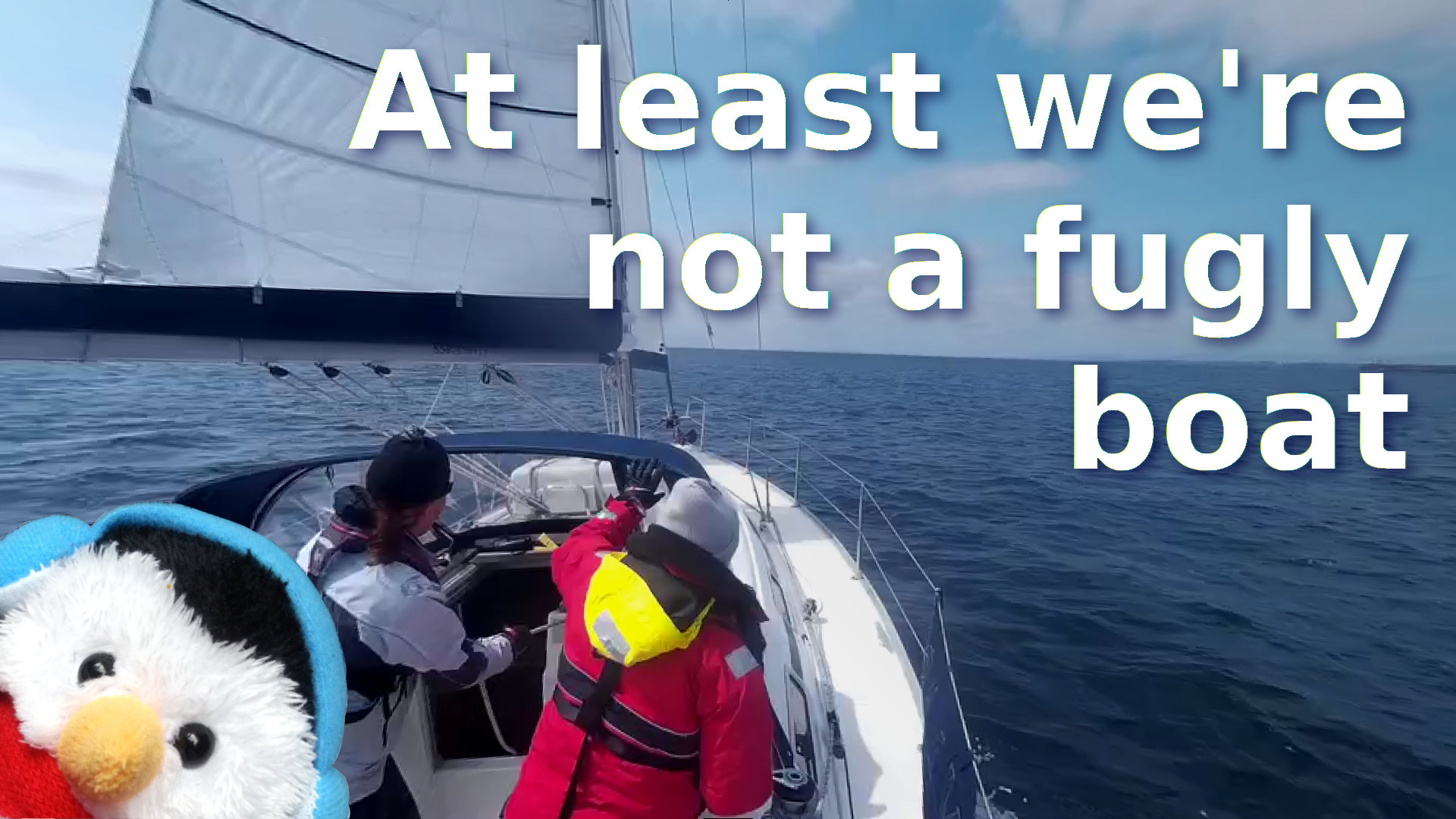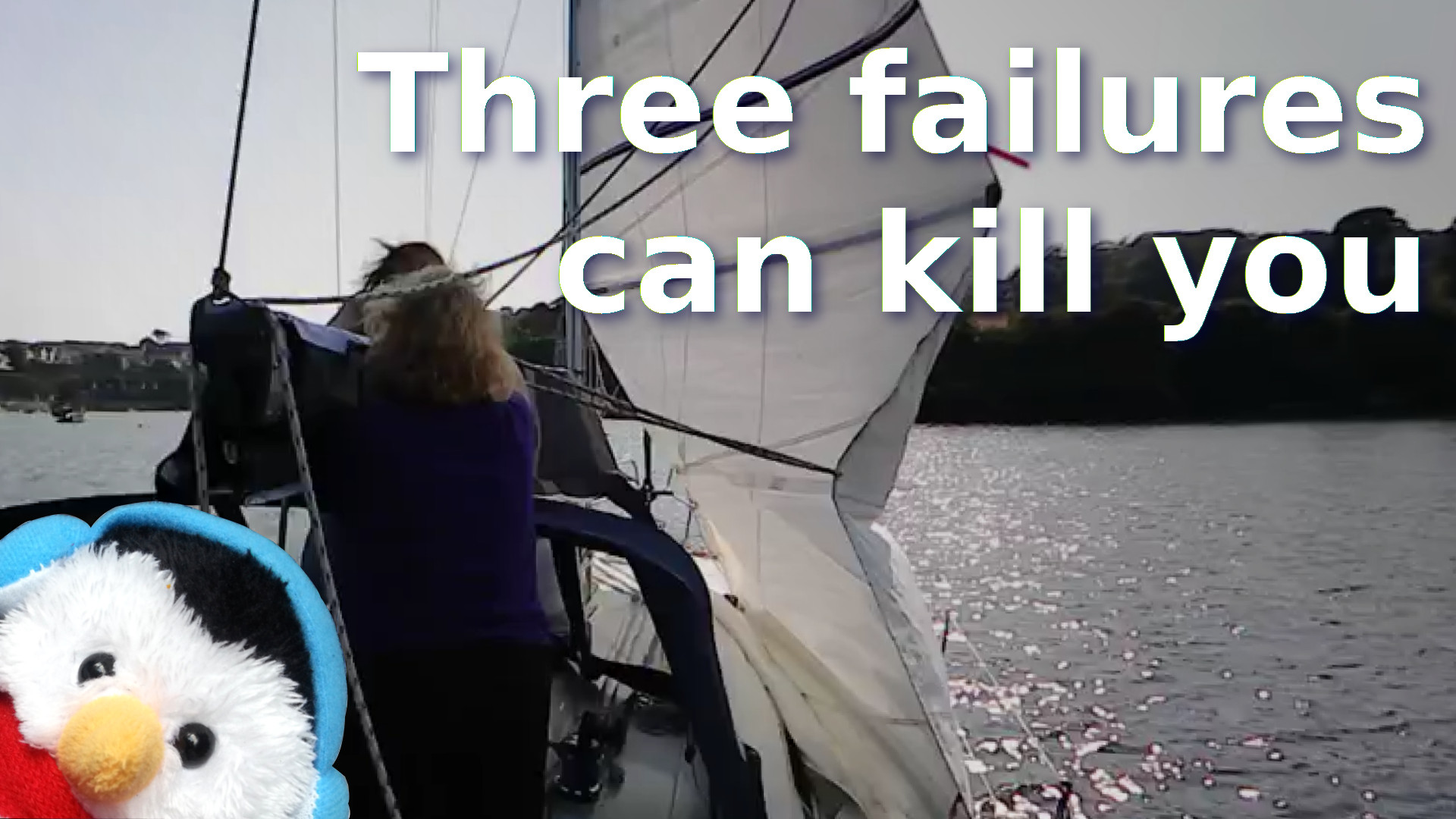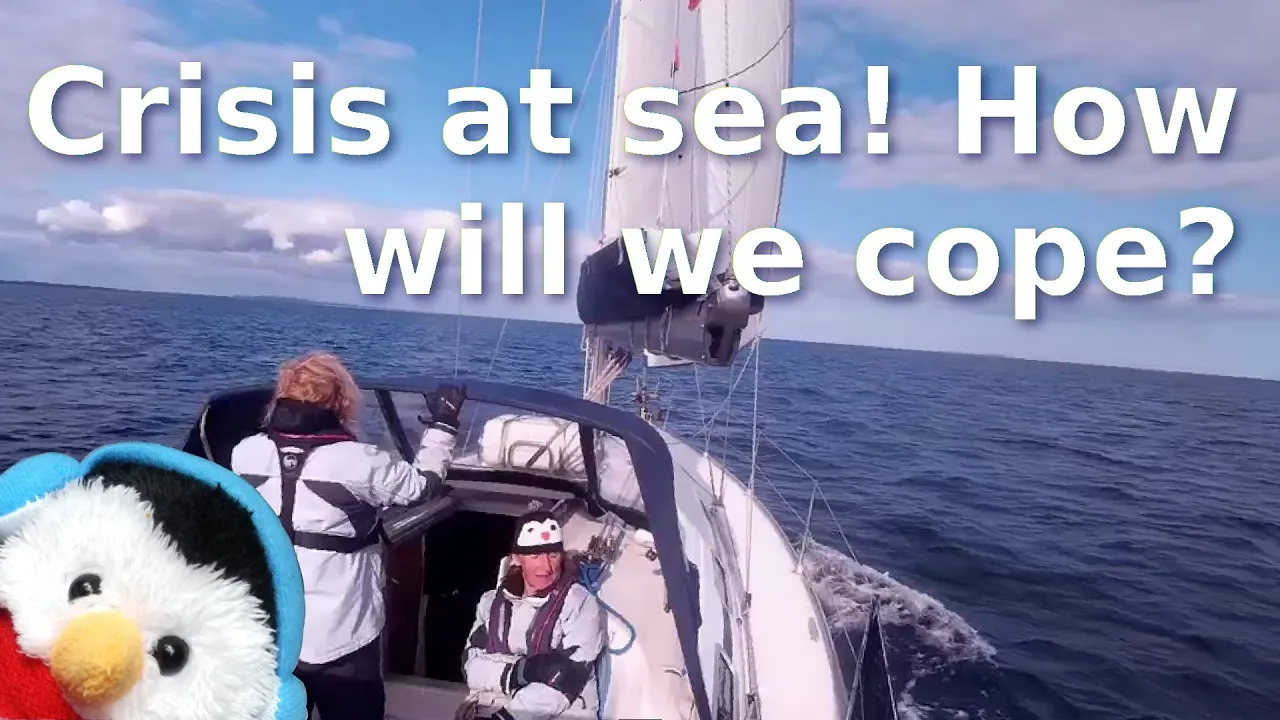We had anchored in Dundalk bay and had a peaceful nights rest. We had needed to use our lee cloths because of the slight swell that was in the bay, but other than that we were fine. We had put out our tripping line because we thought that the sea bed might be rocky and for the first time we used it to help pull up the anchor. I had thrown the ball in with its line and I will not do that again because the line was all tangled and in a knot, so next time I will pay the line out after I drop the anchor.
Coming out of the anchorage we motored over the a red buoy at the bottom of the bay, Once we had cleared that and the sand bank that it protected we were able to point our nose towards Skerries and look for a good angle to the wind so that we could sail. We had enough of an angle to the wind that we could put out our Genoa, but even with the Genoa sheeted in fairly tight we still had a luff in the sail, so I altered course to remove the luff, this did mean that I was pointing towards the land but the luff was gone. Once we had set the sails, the engine was turned off and we had the silence that we both like.
A bit later on we were flying, the sails were set right and we were cracking along at 5.3 knots. Salty Lass was heeled over at 10deg; which is a pleasant sailing angle to the horizon, but because we had not sailed for a long period of time, we felt like we were clinging on. Later on we had to tack and Beverley omitted that she did not know what she was doing. So my asking of the question “Is the crew ready” was very pointed indeed. I even had to remind her of all the tricks, that we had learnt last year like sitting of the side of the working sheet, with the lazy sheet in our hand, that way when we tack we can release the working sheet and pull on the lazy sheet, pulling ourselves across the boat as we tack. That way, we pull on the lazy sheet with all of our body strength.
On our first tack we had to tack slightly North of East, just so that we could get away from the land. As our journey continued these tacks became more Eastwards, because of a technique called Lee boughing where the tide flattened out our tacks. One of the things that we adjust is the traveller and by doing so we increased our speed from 3.9knots to 4.1knots
While we were tacking we were on two different tacks, Port tack which was taking us South and Starboard tack which was taking us Eastwards. We tried to stay on port tack as long as possible because that was taking us the way we were going, while on starboard tack we were getting battered by the waves.
While we were travelling I compared our journey to Skerries with the one we did last year where we motored the whole lot and took 15-16 hours, while this time we sailed and we did three 6 hour sails, as sailing takes a lot out of you. I can really appreciate the long haul sailors who sail for much longer stints, but really you need to be doing sea passages, because there are a lot more obstacles with coastal sailing.
That night we anchored at Skerries which was great apart from an hour around the turn of the tide, where we got so much swell affecting us that we woke up. After an hour we were able to go back to sleep.
The next day, we were off again, this time to go to Howth. We went between the islands at the end of Skerries where we did the Rule of twelfths many years ago. This year we had 1.5m of tide at low tide so we knew that we would be fine, at any point of tide so we were less worried.
We sailed past Lambay where we could of anchored for the night, but tomorrow we need to be in and the sail from Lambay island to Howth in the morning would be rough because the storm that we were going in for was due to start very early in the morning.
Just before we got to Malahide, we contacted Howth to be told that we could not stay, so seeing as we were at high tide and entry to Malahide is really difficult after high tide we practically gunned into the marina, motor sailing all the way.
When we got to Malahide, as we stopped and tied ourselves to the pontoon, the wind took the stern out so I had to get off at the bow rather than the middle like I do usually. Tying her to the pontoon was difficult too because I had to sweat the line in. It was a right to do, but we did it.
Main Information
Why sailing makes us panic!
Published on 25/05/2023
Categories
Other stories from Southern Ireland
Categories
- 2018
- 2019
- 2020
- 2021
- 2022
- 2023
- 2024
- 2025
- Anchor
- Boat Buying
- Boat Projects
- Charity
- Dinghy
- Disaster
- Electrics
- Engine
- England
- Events
- Food
- Fun
- Harbour
- How tos
- Isle of Man
- Maintenance
- Marinas
- Miscellaneous
- Mooring Balls
- Navigation
- Northern Ireland
- Not Sailing
- People
- Plumbing
- Safety
- Scotland
- Southern Ireland
- Wales
- Yachtmaster













